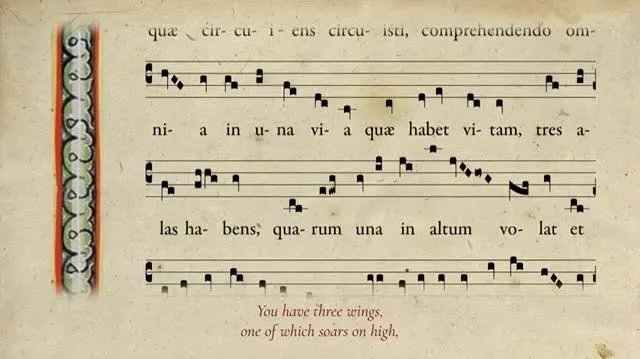Introduction
If you were to ask someone to name a classical music composer, the result would almost certainly be a man – most likely one of those named below.
But first, for the musicologists out there, let me define ‘classical’ in the broad sense of the word, meaning the long tradition of ‘art’ music that includes the familiar names such as Vivaldi, Bach, Mozart, Beethoven, Brahms, Tchaikovsky, Wagner, Stravinsky etc etc as well as contemporary composers of film music such as John Williams and Hans Zimmer.
As a matter of interest, in the study of music history, only the period from about 1750 to 1820 is termed ‘Classical’. That would only include Mozart and Beethoven from the list above. Beethoven is normally considered to be a bridge between the Classical period and the next period, the Romantic.
So, let’s take a journey through music history and discover some remarkable women composers.
Part 1: 810 to 1650
Kassia (born 810 Constantinople)
Abbess Hildegard von Bingen (born ca. 1098 Bermersheim, Germany)
Barbara Strozzi (born 1619 Venice, Italy)
We jump forward a few hundred years to a time where music had moved on and developed more complex forms.
Barbara Strozzi was a highly regarded composer and singer who published eight collections of her songs. She was the daughter of renowned poet Giulio Strozzi, and a member of one of the most powerful families of Florence. A study of her life shows her to have been an extraordinary woman of talent, beauty and intellect, who published 125 pieces of vocal music. A contemporary painting gives us a remarkable glimpse of this fascinating lady.
It is likely that many of the songs she wrote would have been written for her own use. She was described as a virtuosic singer, and her vocal music shows daring for a composer of her time. She took tremendous care in the setting of her texts, creating an intimate connection between words and music. The video clip here presents, in my opinion, a superb interpretation of possibly her most famous song. The text for this song and a translation into English can be found in the YouTube notes.
The more musically minded amongst you may notice that the song uses a constantly repeated bass line, (technically called a ‘ground bass‘ or ‘basso ostinato’) and can be heard here played by the soloist right at the start of the piece. It consists of just 4 notes in a descending scale. This is repeated again and again while the voice and the other instruments play. These other instruments will often improvise over the bass or play a melodic line imitating the voice. The irony here is that this 800-year-old ground bass compositional technique is still used today, and can be heard in modern pop/rock music, though now referred to as a ‘bass loop’.
With Barbara Strozzi’s composition from around 1650, we have arrived in the period of music called the Early Baroque. Prior to the Baroque period we had the Medieval and Renaissance periods. In part two of this series we will take a look and listen to 3 women composers from the Baroque period. This will take us up to the year 1750. Future articles will deal with the later Classical, Romantic and Modern eras.
By Elizabeth Moonlight





Wonderfully written, Bettsi! I’ll admit my knowledge of classical music, especially female composers, is quite limited, but I love the music. I’m excited to read more and learn from your insights!
Thanks so much Eska. It’s interesting to note, thinking of your writings on architecture, that the periods in musical history have taken their names and inspiration from similar periods in art and architecture.
Perhaps there are more “female” type composers then we first thought – smiles. https://www.classicfm.com/discover-music/great-classical-composers-who-were-gay/
A very interesting article, Vi. Probably Tchaikovsky is the best known example. His life (and disastrous sham marriage) was famously and effectively portrayed in the Ken Russel movie ‘The Music Lovers’.
Great article.
Barbara Strozzi’s Che Si Può Fare is one of my all time favourites 😍
Thank you Jaqui. Che Si Può Fare was my favourite of those pieces I listened to when deciding which one to include here.